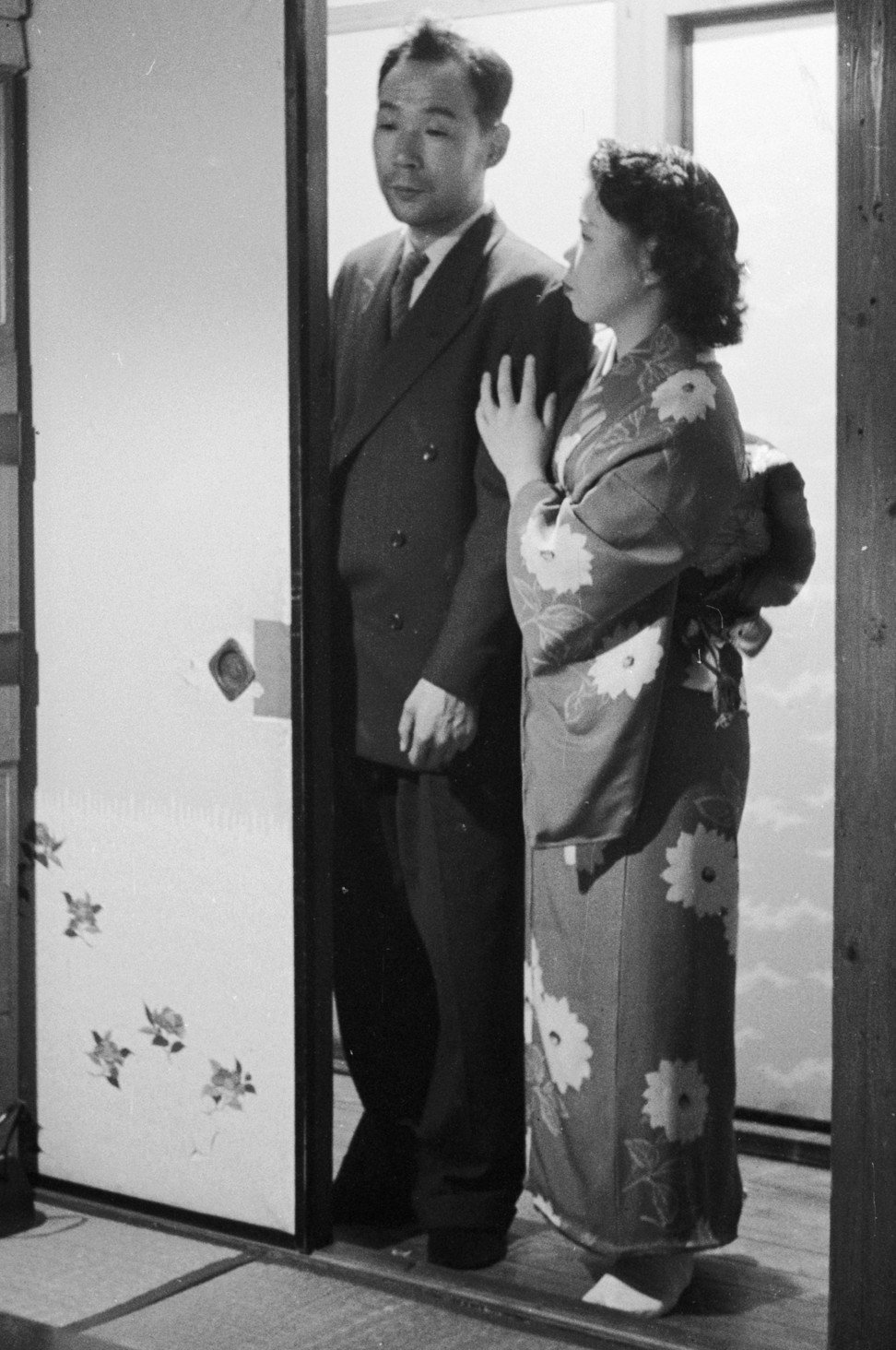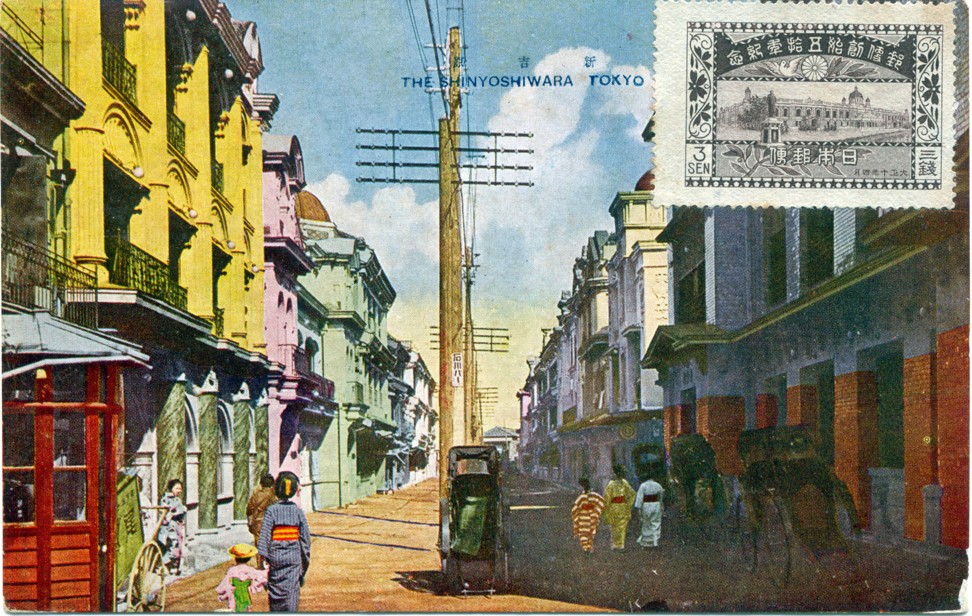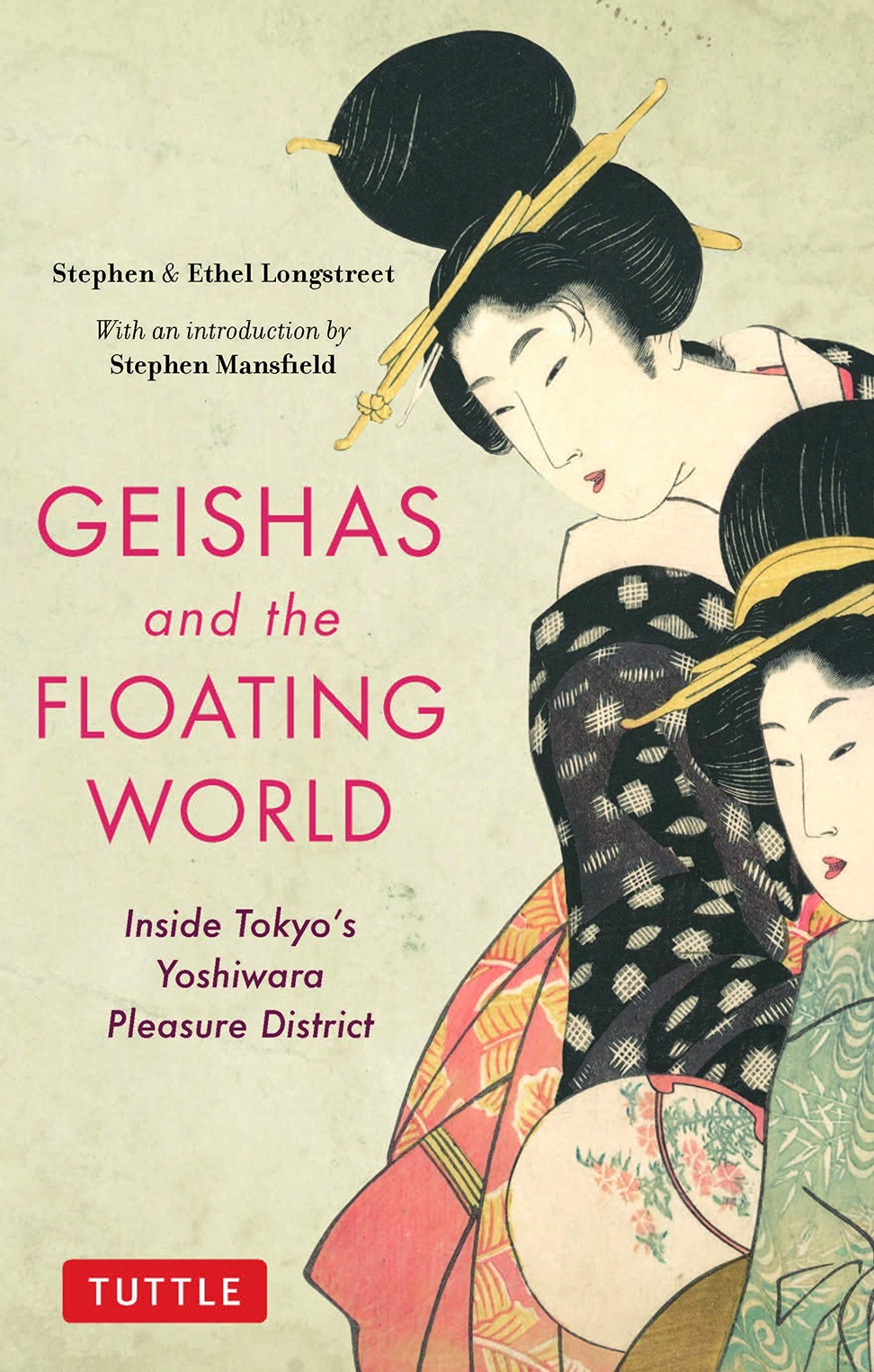
A sex tour through Tokyo’s ‘pleasure district’ from the 1960s is a tale of sake and sordid reality
- Geishas and the Floating World is an ode to sex and Japan in the 1960s through an American’s eyes – a world where glimpses of glamour still exist
- Co-author Stephen Longstreet doesn’t shy away from the dark side of Yoshiwara, while depiciting it mainly as a sex factory behind satin curtains

Geishas and the Floating World: Inside Tokyo’s Yoshiwara Pleasure District, by Stephen Longstreet and Ethel Longstreet, Tuttle, 4 stars
The mid-20th century comic strip Terry and the Pirates, as cringeworthy as its artless racism is, tells us as much about Americans of the era as it does about the Chinese. In a similar way, Stephen and Ethel Longstreet’s Geishas and the Floating World is a delightful artefact for seeing Japan through the 1960s American gaze. However, this gaze is so ineluctably male that it’s hard to identify what Ethel’s contributions might have been.
Still, Stephen Longstreet is the perfect American to reflect on the Yoshiwara pleasure district. A painter, jazzman, Hollywood screenplay writer, equally at home in Tabu in Saint Germain des Prés and the Cotton Club in Harlem, he instinctively identifies life in Yoshiwara as an Eastern vie de bohème.
It is one of around 100 books Longstreet wrote, so readers will not pick it up expecting the literary insight of Donald Keane’s translations of Japanese literature or the erudition of Ivan Morris’ The World of the Shining Prince.

Yoshiwara, like many other pleasure quarters across Asia, was organised by a government keen on social control and tax revenues. Set in a former marshland, it soon extended over many acres of tea houses, baths, theatres and courtesans’ villas.
Over time Yoshiwara became the focal point for artists, actors, artisans as well as the courtesans – the mother lode of Tokugawa-era culture. We can still glimpse the glamour of the era in the splendid woodblock prints of Utamaro.
The floating world, as Timon Screech wrote in his definitive study Sex and the Floating World, epitomises the Buddha’s warning that this world is illusion, and that there is nothing more illusory or more fleeting than pleasure.
Melancholy pervades the floating world, and gives birth to a poetic voice that the oiran (high-ranking courtesans) channelled in their artful songs and dances. The sad notes of the samisen provided the perfect accompaniment.
Longstreet’s description of the floating world focuses mainly on sex. Below the haughty oiran and their aristocratic protectors, a chorus of performers sought paying patrons for a night, or even shorter engagements.
He emphasises how Yoshiwara became a prison for many of these women, trapped by debt, and how it became their tomb, killing them with alcohol or syphilis. The sordid reality of Yoshiwara is the other side of the coin which the glamorous prints of Utamaro obscures.

The image of Yoshiwara as mainly a sex factory behind satin curtains is a reflection of Longstreet’s late 19th century and early 20th century sources.
After the 1859 opening of Japan, traditional Tokugowa culture declined rapidly. The daimyo, or feudal lords, who had patronised the distinguished, erudite and exquisitely trained oiran, went into eclipse. The genro, or notables of the Meiji restoration, kept their cultivated lovers in private villas, as their counterparts did in London or Paris.
So merchants and salarymen remained the only patrons of Yoshiwara, and as happened in other Asian pleasure quarters, the relative lack of culture of the newly affluent encouraged them to settle for sake and sex.

Longstreet comes too late to the party to understand what had been lost culturally, though he does point out that the American marines roaming the town did not contribute to raising the tone.
In the 1960s, the American reader still needed to exorcise the ghost of Freud from their sex lives. Japan’s frank and uncomplicated relationship with pleasure offered them an attractive alternative. Many of Longstreet’s sources document the unease of the American Dante guided through this erotic purgatory by laid-back Japanese.
It is fun to speculate what a 113-year-old Longstreet would think about the bubble baths of Tokyo, the seeming disinterest of many young Japanese in sex, and whether American visitors to Japan are reconciled to their Dionysian side.

As it is, in this new version of Geishas and the Floating World, we have an ode to sex and Japan by a friend of Matisse, Count Basie and Paul Robeson, with all the charm and mental baggage which that entails.
Asian Review of Books